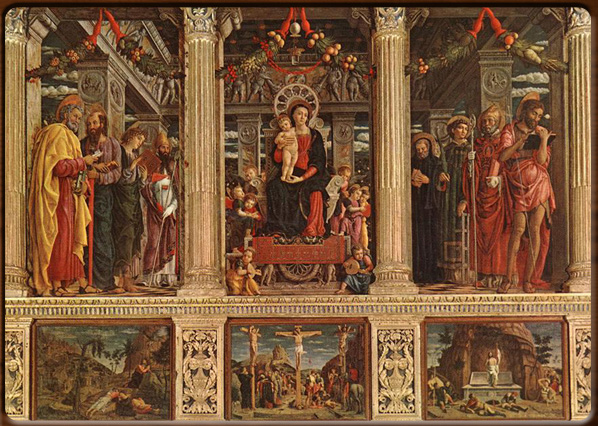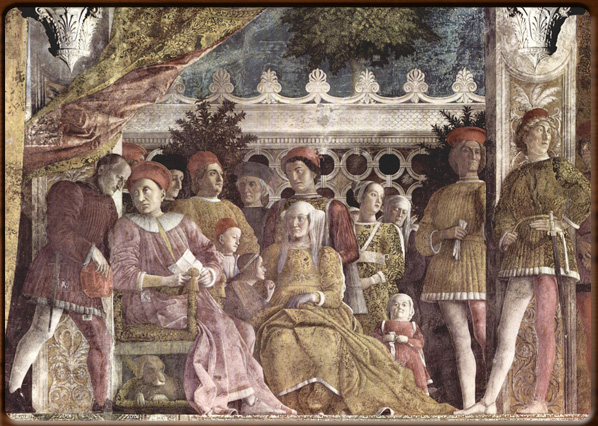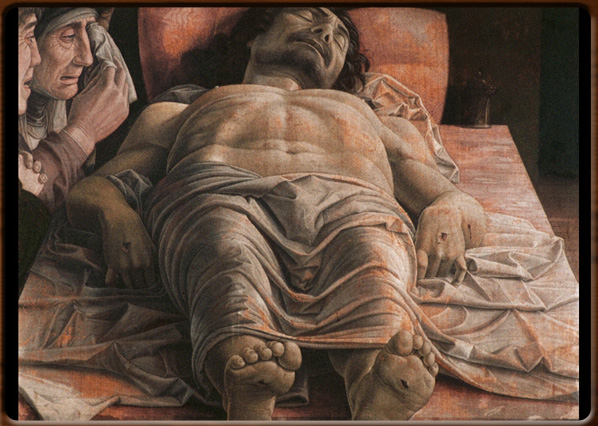
San Zeno altar-piece, Andrea Mantegna, 1456-59, San Zeno, Verona.

The Camera degli Sposi, Andrea Mantegna, 1465-74, Castel San Giorgio Mantua.

The Cristo morto, Andrea Mantegna, 1470-75, Pinacoteca di Brera, Milano.



No video
Andrea Mantegna (Isola di Carturo, Padua 1431 – Mantova 1506), was a major painter and carver and played a crucial role in spreading the Renaissance style in North Italy.
A pupil of the master painter Squarcione in Padua in 1442-1448, he benefitted from the stimulating cultural ambient of the Tuscan artists in this school.
In 1448 he was commissioned to decorate the Ovetari chapel in the Chiesa degli Eremitani in Padua with a series of frescoes. In this work and in other masterpieces from his Padua period, such as his Polittico di San Luca (1453-54, Pinacoteca di Brera, Milan) and Pala di San Zeno (1456-59, in the Church of San Zeno, Verona), Mantegna set down the foundations for Venetian Humanist art.
In 1460 he moved to Mantua as the Gonzaga court painter. Only two early works exist from this period: his tryptych with an "Adoration of the Magi", a "Circumcision and an Ascension" (1460-70, Galleria degli Uffizi, Florence) and a "Death of the Virgin" (1461, Museo Nacional del Prado, Madrid), which provides a foretaste of his famous decoration of the Camera degli Sposi in the Doge’s Palace in Mantua (1471-74).
Over the years he developed his style, with intense colours and clearly defined outlines, good examples being his "San Giorgio" (1467, Gallerie dell’Accademia, Venice), "St. Sebastian" (1470, Kunsthistorisches Museum, Vienna) and "Christ is Dead" (1480, Pinacoteca di Brera, Milan).
Mantegnana also drew heavily on the classic world for inspiration, as seen in his Triumph of Caesar (1480-95, Hampton Court Royal Collection, England).
Among his later more intense works are the three canvases hanging in the Musee du Louvre (Paris) – Madonna della Vittoria (1496), Parnassus (1497) and Triumph of Virtue (1497) – and a beautiful monochrome Samson and Delilah (1495) at The National Gallery in London. Perhaps his last work was his third St. Sebastian (1506) in the Galleria Franchetti in Cà d’Oro, Venice (the earlier two now in Vienna and Paris).
Mantegna was also a fine carver, his best works (religious and mythological) now in the Galleria degli Uffizi, Florence.
1300 - 1400 - - rev. 0.1.6